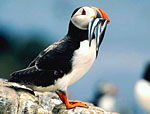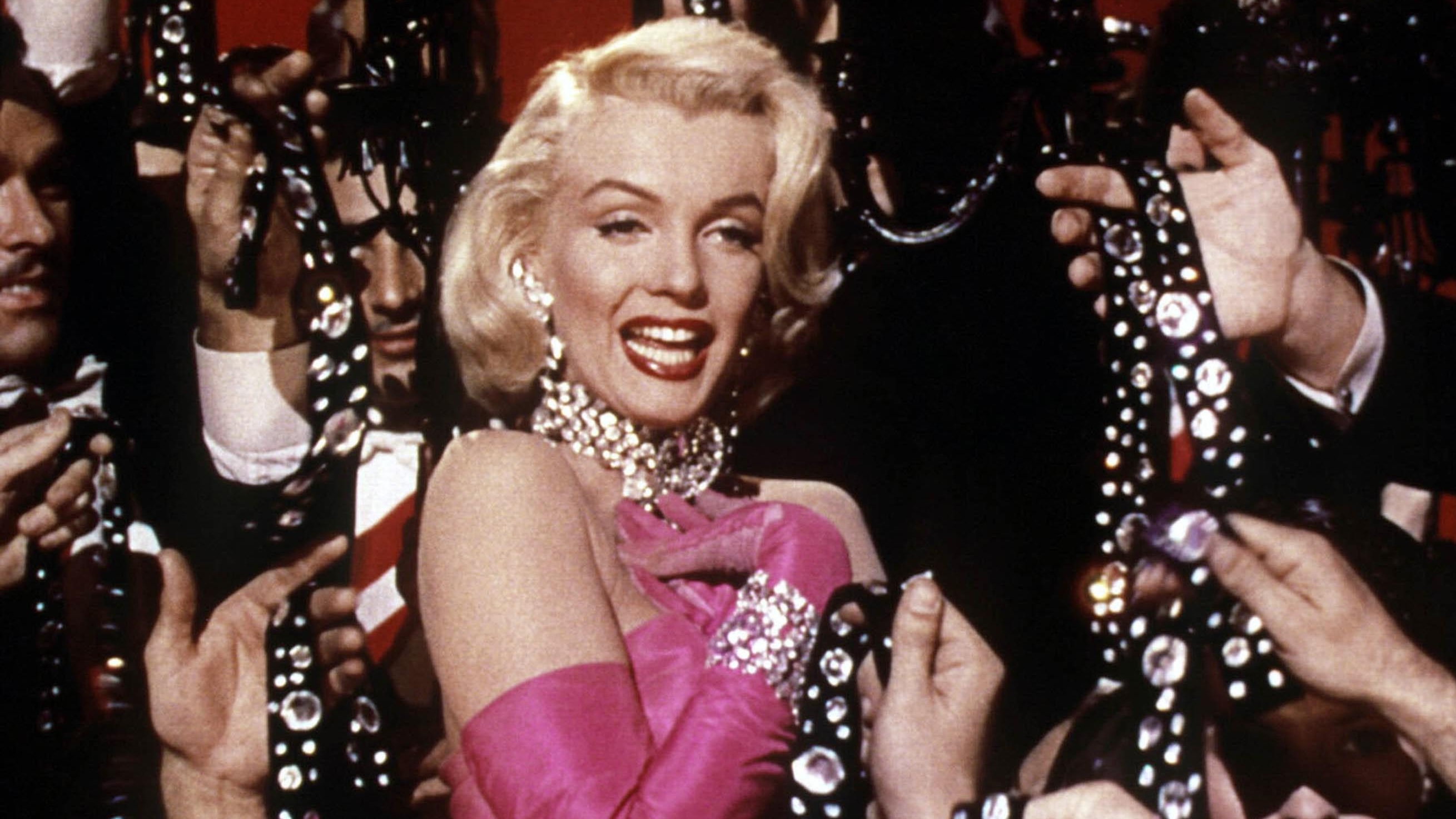Where to see puffins
Where to spot puffins nesting along the coastline in the summer


A scatter of soil is thrown in the air from a patch of bracken, there's a quiet wheezy grunt, and, out on to the bluebell-spangled turf, just yards from where I'm sitting, emerges Britain's most endearing bird. An adult puffin, its multi-coloured, outsize beak glowing in the sunshine, waddles its way like a diminutive penguin to the cliff edge where Irish Sea breakers thud into the rocks below.
It's early spring on Skomer Island off the Pembrokeshire coast, and on the edge of one of its puffin colonies, the birds are cleaning out their breeding burrows. Here, where about 6,000 pairs breed-puffins mate for life-they don't need major excavation; most are expropriated rabbit burrows.
More puffins are lined up on the cliff edge, bowing and bobbing to each other like a line of miniature waiters receiving instruction. Now and again, one takes flight over the waves, its short wings whirring like some wind-up child's toy. At six wing-beats per second, it will use its wings to zoom underwater, its red-webbed feet acting as rudders, as it dashes this way and that to catch a beak-load of silvery sprats or sand eels.
In April, at the back of the burrow, each pair builds a nest lined with grasses, seaweed and feathers. After the female lays a single egg, both parents take turns incubating it for about 40 days. And after the chick has hatched, you'll spot an adult land on the clifftop, its beak loaded with 10 or so small fish-the world record is 80-shake itself down to dry off, then potter uphill to its burrow, where the growing youngster will devour the catch.
It's another 40 days before the fish-fattened young puffin is old enough to leave its burrow. Then, it also waddles down to the cliff edge-always at night-running the gauntlet of predators like great black-backed gulls, and launches itself on its life journey to the sea that will sustain it.
With about six million puffins breeding across the North Atlantic from eastern Canada and Greenland to Britain and Scandinavia, they remain common seabirds. But some colonies are declining, perhaps due to over-fishing and because global warming is causing their fish prey to relocate, and a few colonies have been decimated by rats. Worldwide, there are just three different puffin species.
Where to see the Puffins
Sign up for the Country Life Newsletter
Exquisite houses, the beauty of Nature, and how to get the most from your life, straight to your inbox.
Puffins are ashore from April to early August. For the rest of their lives, these ocean birds feed hundreds of miles out at sea, taking violent winter storms in their stride. Then, they look rather different, too; their plumage darker, more dismal, and that summertime beak fades to black. Where to see puffins
Early June to mid July on: Skomer Island, Pembrokeshire (by boat from Martin's Haven) Bempton Cliffs, near Bridlington, East Yorkshire South Stack, near Holyhead, Anglesey Farne Islands, Northumberland (boat from Seahouses) Isle of May off the Fife coast (a long boat trip from Crail or Anstruther)
* For more wildlife features like this every week, subscribe and save
Country Life is unlike any other magazine: the only glossy weekly on the newsstand and the only magazine that has been guest-edited by HRH The King not once, but twice. It is a celebration of modern rural life and all its diverse joys and pleasures — that was first published in Queen Victoria's Diamond Jubilee year. Our eclectic mixture of witty and informative content — from the most up-to-date property news and commentary and a coveted glimpse inside some of the UK's best houses and gardens, to gardening, the arts and interior design, written by experts in their field — still cannot be found in print or online, anywhere else.
-
 Diamonds are everyone's best friend: The enduring appeal of one of Nature's sparkliest treasures
Diamonds are everyone's best friend: The enduring appeal of one of Nature's sparkliest treasuresEvery diamond has a story to tell and each of us deserves to fall in love with one.
By Jonathan Self
-
 RHS Chelsea Flower Show: Everything you need to know, plus our top tips and tricks
RHS Chelsea Flower Show: Everything you need to know, plus our top tips and tricksCountry Life editors and contributor share their tips and tricks for making the most of Chelsea.
By Amie Elizabeth White